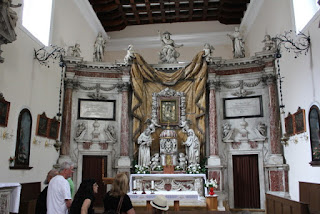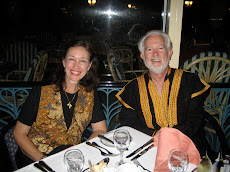The next day found us in the beautiful harbor of Kotor, Montenegro, which got its name from the dark forested mountains which can appear black in certain lights.
 Montenegro--"Black Mountains"
Montenegro--"Black Mountains"
Kotor is at the most secluded end of the Gulf of Kotor, often described as the southernmost "fjord" in Europe.
Kotor is another of the walled cities of the region, with evidence of many cultures before. This is the view from outside the Venetian fortifications, Founded by the Romans as part of the Province of Dalmatia, Montenegro with its capital Kotor was ruled subsequently by Venice, Bulgarians, Ottomans, the Hapsburgs and Napoleon, and finally Yugoslavia before becoming its own independent country. A click on the link at Kotor will take you to many more beautiful pictures. Our knowledgeable guide Martin was very helpful as he showed us through Kotor and nearby Budva. He pointed out many beautiful churches with their mosaics, the predominant style of religious art of the period.
Our knowledgeable guide Martin was very helpful as he showed us through Kotor and nearby Budva. He pointed out many beautiful churches with their mosaics, the predominant style of religious art of the period. 

 |
| Exterior of a church |

Here a local shopkeeper is making crepes. (Alas, no time for anything but a picture!)
As our ship departed Kotor we passed several churches, monastaries and convents sprinkled about the area. Montenegro was a wonderful surprise on our journey, and would be a choice destination in the future.
 |
| Sunset on the Adriatic |

























 This boat on the side of the cathedral is an example of medieval Christian graffiti probably drawn by Christian Crusaders passing through on their way to the Holy Land.
This boat on the side of the cathedral is an example of medieval Christian graffiti probably drawn by Christian Crusaders passing through on their way to the Holy Land. 






























